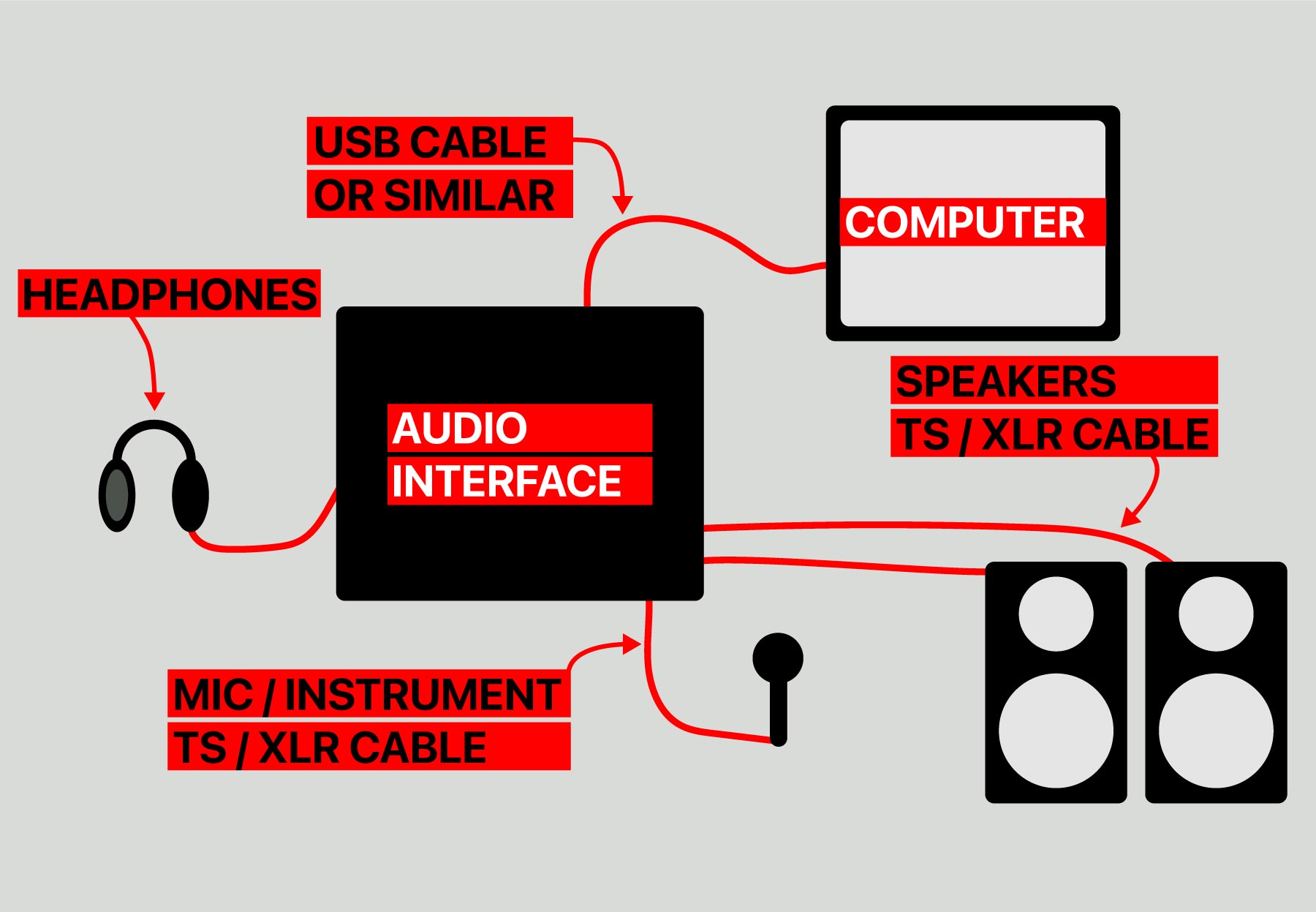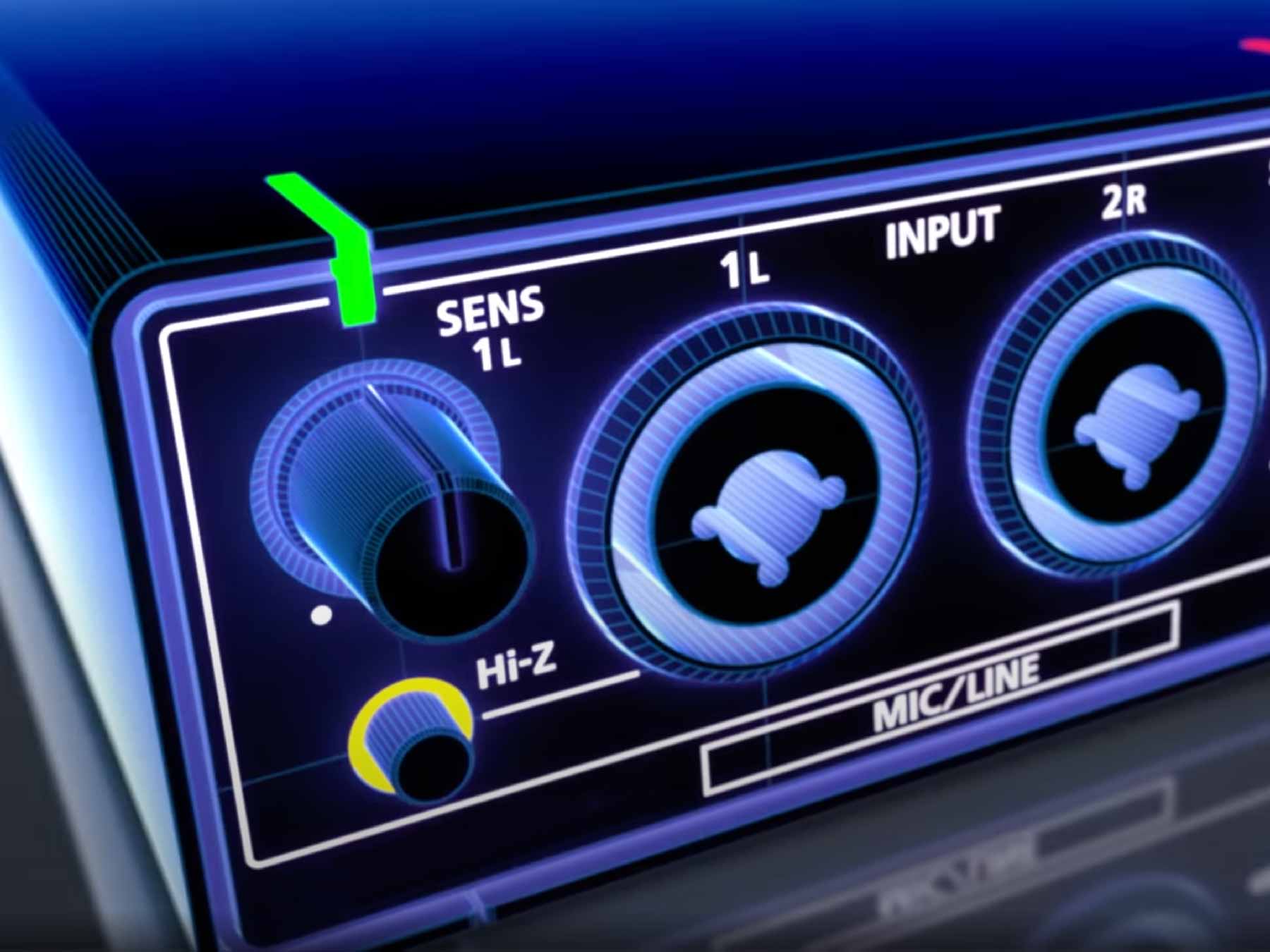What is an Audio Interface?
An audio interface is a go-between device that allows you to connect an instrument to a computer. A typical audio interface allows input and output of audio, as well as other possible connections like MIDI or USB connections. Inputs are typically used to connect musical instruments, or microphones. Outputs are typically used for connecting external speakers or headphones. In general, the purpose of an audio interface is to record your audio creations on a computer with the help of a software like a digital audio workstation (or DAW). Some audio interfaces also have built-in preamps, which can be used to amplify the signal of a microphone or instrument before it is recorded.
Do You Need an Audio Interface?
If you are an aspiring musician or content creator that wants to record or produce your own audio creations on your computer, you probably need an audio interface. While it is possible to record audio to a computer without an audio interface, the options are very limiting. Even if you are able to record to your computer without an audio interface you may still benefit from one. For example, audio interfaces offer better audio quality than a typical computer sound card or built-in audio hardware.
Here are a few other reasons you may need an audio interface.
- You need more inputs. If you want to record multiple instruments or microphones at the same time, you may need more input channels than your computer’s built-in audio hardware can provide. Simply wanting to record in stereo will typically require 2 inputs, so keep that in mind when looking at audio interfaces.
- You need more control. An audio interface will most likely have physical controls for adjusting levels and settings. It may also have switches for phantom power, dedicated headphone out volume control, output control for external speakers, etc. An audio interface with physical controls can be a lot more convenient than using software controls.
- You need to connect professional equipment. If you are using professional audio equipment, such as a mixing console or outboard processors, an audio interface can provide the connections you need. An audio interface may also have MIDI connections for MIDI controllers, audio inputs in different formats such as TS cable inputs, or XLR cable inputs.
In general, if you want to produce or record audio on your computer and you need more than the basic capabilities of your computer’s built-in audio hardware, you may benefit from an audio interface.
How to Connect an Audio Interface

A standard audio interface setup usually consists of the following.
- Audio Interface : The go-between device that allows you to connect an instrument to your computer.
- Computer : The digital recording software (digital audio workstation) runs here and is connected to your audio interface via USB or similar cable.
- Instruments / Microphones : These connect to the audio interface by TS cable, XLR cable, or similar cables.
- Monitors / Headphones : To listen to and monitor your audio through the interface, use headphones or send the output to some external speakers.
- Cables : As mentioned above, all the other connections use cables. Make sure you get the right cables for the right connections.
